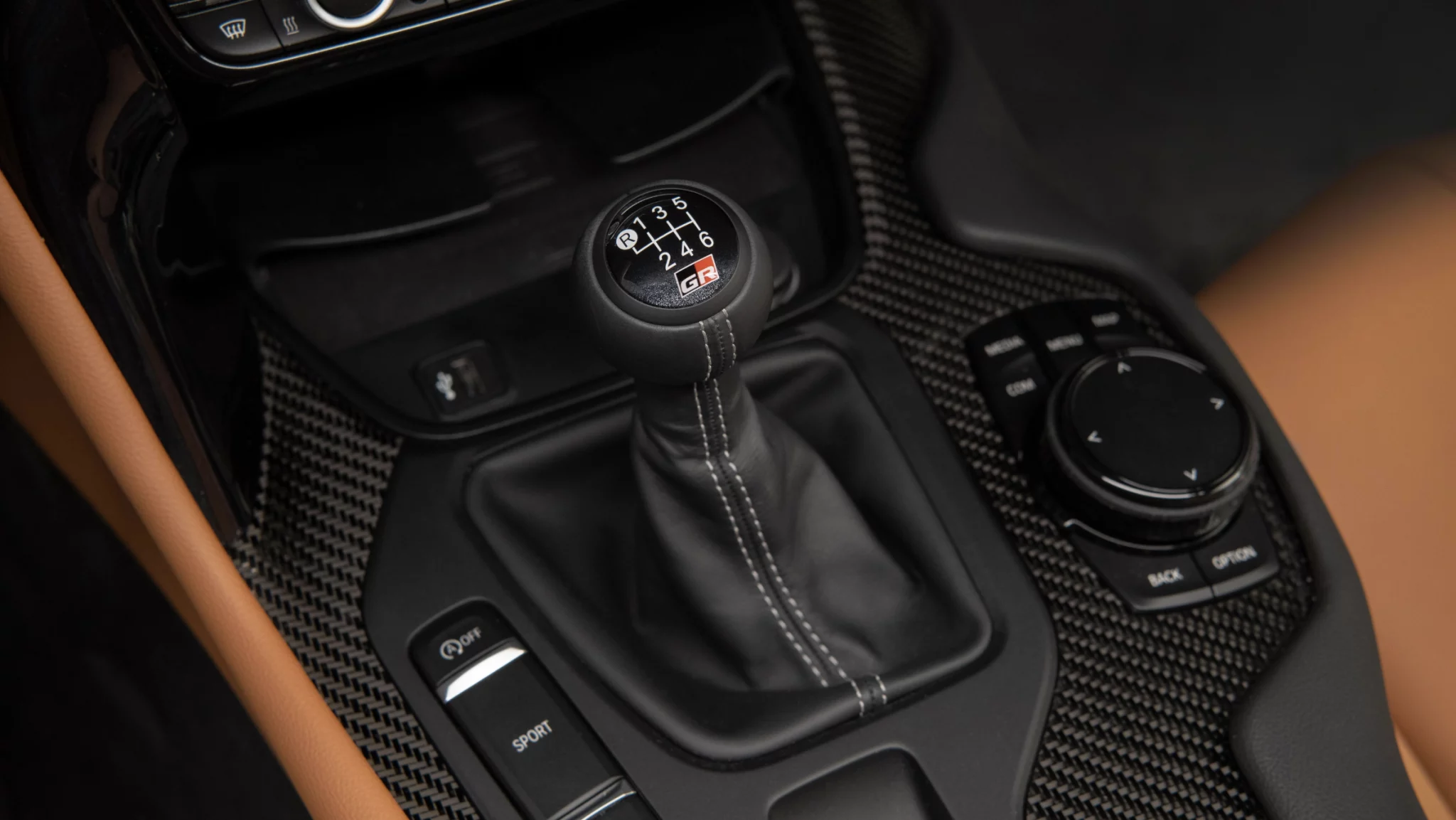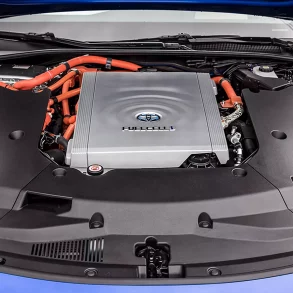Summary
- Automatic transmissions accounted for 99.3% of all cars sold in North America in 2019
- Despite the challenges, or maybe because of them, of the global pandemic and the supply chain, manual transmissions started to return
- Market share rose to 0.9% in 2021, 1.2% in 2022, and 1.7% in 2023
- Following this trend, manual transmissions are likely to cross over the 2% mark for 2024
- We think that the combination of young enthusiast drivers and performance-oriented variants of many cars are the biggest driving factors for this resurgence.
Just a few short years ago, it seemed that manual transmissions were on the brink of extinction. Automatic transmissions, dual-clutch semi-automatics, and direct drive EV transmissions have all enjoyed massive popularity.
However, a surprising trend has emerged in the past five years. The “row your own” transmission is making a resurgence, especially in new cars both globally, and surprisingly, in North America.
A Brief History
For decades, manual transmissions were the norm, accounting for roughly half of all new cars sold. However, with advancements in semi-automatic (paddle shift) transmissions in the very late 20th century, as well as newer automatic transmission technologies, the stick shift very quickly declined as the 21st century started.
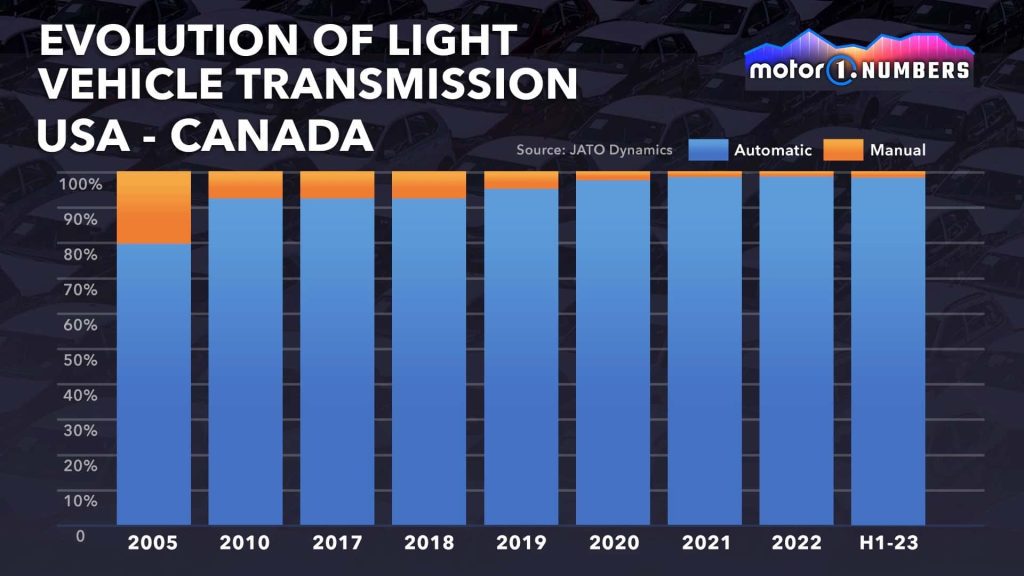
As the 2000s and 2010s came and went, manual options became increasingly rare, especially in mainstream vehicle segments. It declined to the point that by the end of 2019, only 0.7% of new vehicles in North America were sold with a manual transmission.
The Return of The Manual Transmission
Despite the near-death of manuals, automakers, both mainstream and niche, have begun reintroducing manual transmissions across various models. One of the biggest examples is the Ford Mustang, which reintroduced a manual gearbox option for the Mustang GT in 2019 for the 2020 model year.
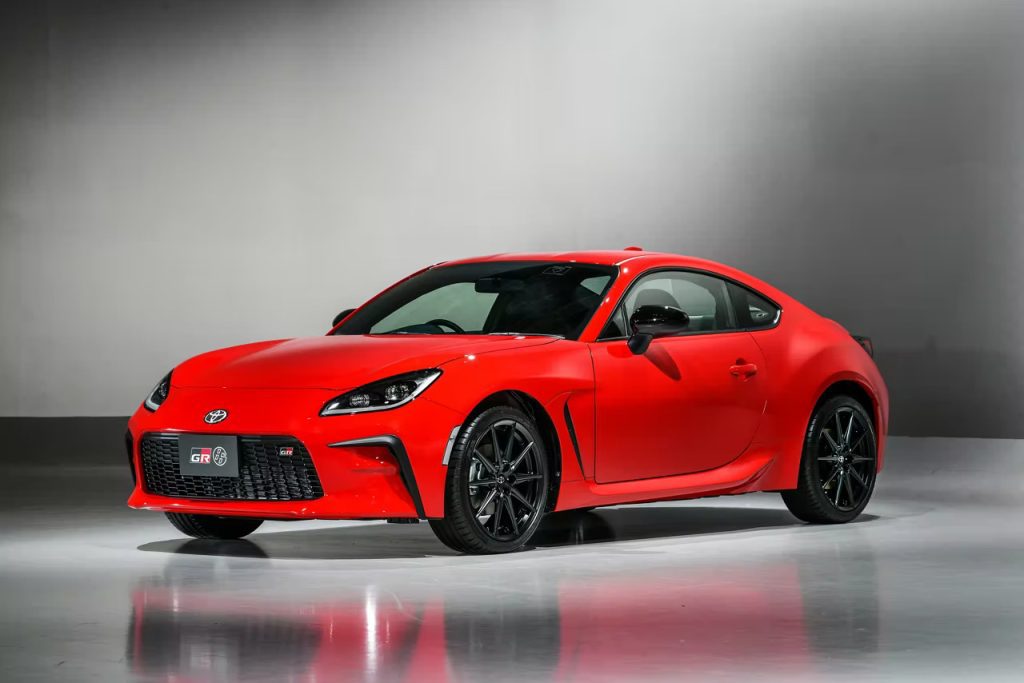
Other examples come from Honda with the Civic, especially the Type R, Subaru with the WRX, and Toyota with the GR86. This renewed interest, especially from younger drivers, provided a demand for stick shifts that saw manual transmission sales increase to 0.9% of the market in 2021, and 1.2% in 2022. These two statistics are important, as these were the model years affected the most by the global pandemic.
An Upward Trend
Several factors have contributed to the resurgence of manual transmissions in new car offerings since 2019. One of the most important factors is the renewed appeal of driving engagement and enthusiast culture. After the world shut down for a couple of years, getting back out on the roads and being able to connect with a car at that deeper level helped fuel the fire, to the point that in 2023 1.7% of cars sold in North America came with a manual.
This specific demand for performance-oriented variants and special editions across various vehicle segments has shown that there is still a place for manual transmissions. This is especially true in the sports car and hot hatch segments, where the manual is not only an option, but for many is the correct transmission to use.
In fact, small and mid-sized cars are the segments with the highest prevalence of manual transmissions, according to a report compiled by Motor1. The Toyota GR86 had roughly 50% of its units in 2023 come with a manual. The Subaru BRZ, the same car as the GR86 with a different badge, had 79% of its units in 2023 as manuals.
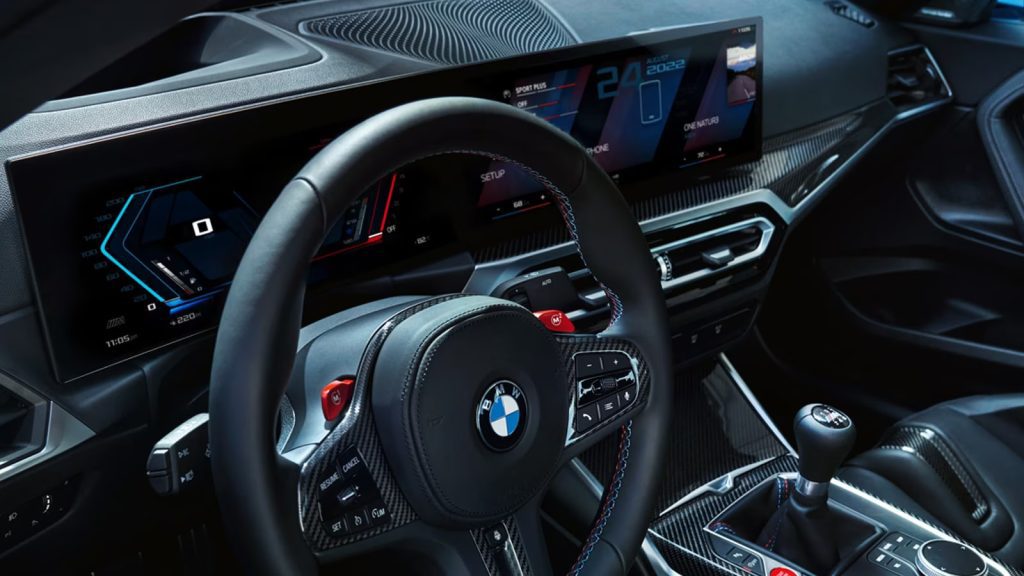
Executive and high-end cars are also seeing a resurgence, with BMW having also seen a huge uptick in manual transmissions in its M-cars. The 2023 M2 had 50% of units with a manual, and the M3/M4 shared 20% manuals in that same time period. Porsche is also shipping roughly 40% of its models that offer manuals, including the 911, with stick shifts.
Even Hyundai, one of the biggest proponents of high-tech automatic transmissions, offers manual transmissions for its N-cars. The 2023 Elantra N shipped a full quarter of its units for North America with manual transmissions, despite having one of the few DCT semi-automatics in the sub-$40,000 range.
Analysis
Looking at all those models that come with manual transmissions above, as well as the continual growth of year-over-year sales, the trend that emerges is that manual transmissions are far from dead. Taking the current trend, it is very possible that manual transmissions might account for 2% or greater of the overall sales of cars in North America for 2024.
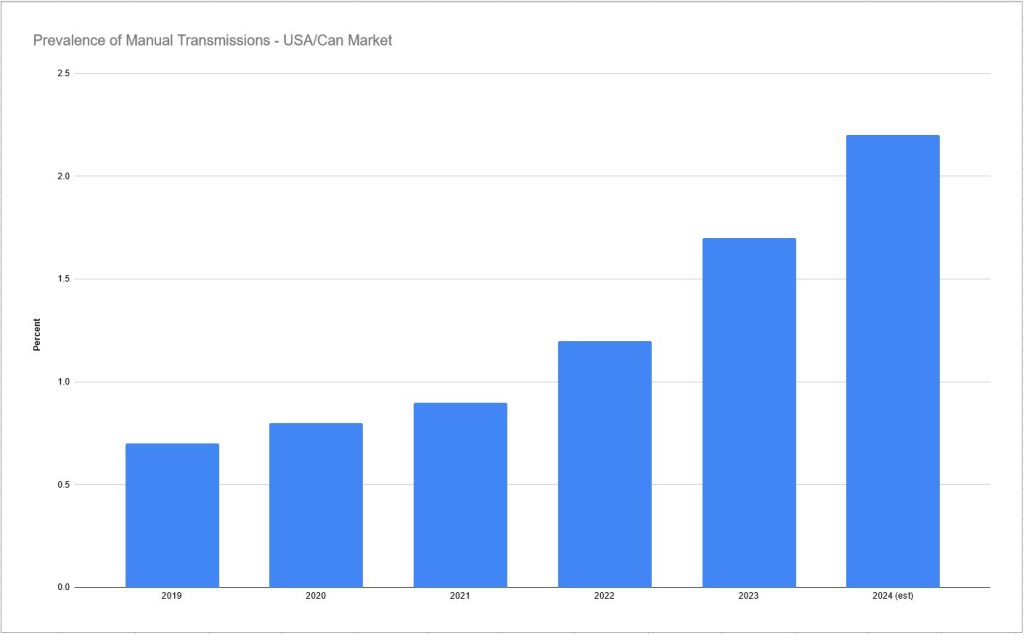
Another factor that may have made an impact on the return of manuals is that a clutch pedal and 6-speed transmission is both the most cost effective and cost saving way to produce a car. During the global pandemic, supply shortages meant that transmission control computers were slower to arrive than clutch plates and a third pedal.
We think that the resurgence of manual transmissions in new car offerings since 2019 marks a notable shift in automotive trends, driven surprisingly by the under-30 driver market. These consumers, hungry for a new emphasis on driving engagement, have developed their own enthusiast culture around the manual transmission.
It’s even become a badge of pride in some circles, especially with the affordable sports car segment. While they aren’t threatening to overtake the market, the simple fact is that manual transmissions are making a comeback, and we, for one, are happy to see it.

